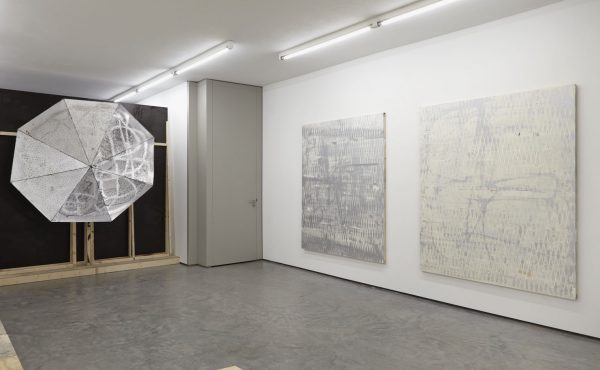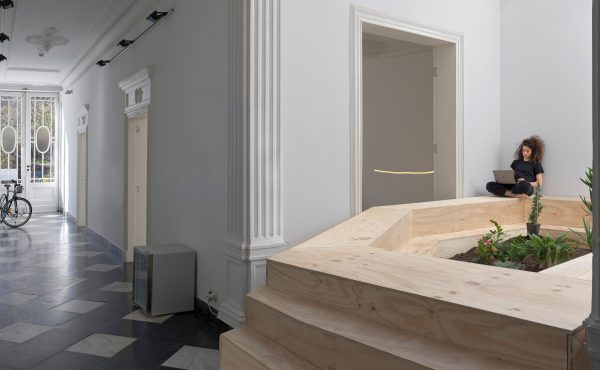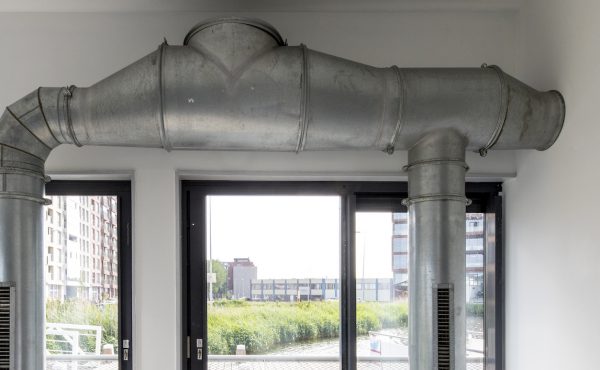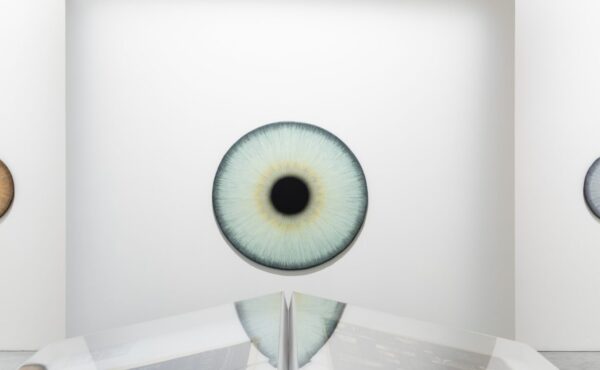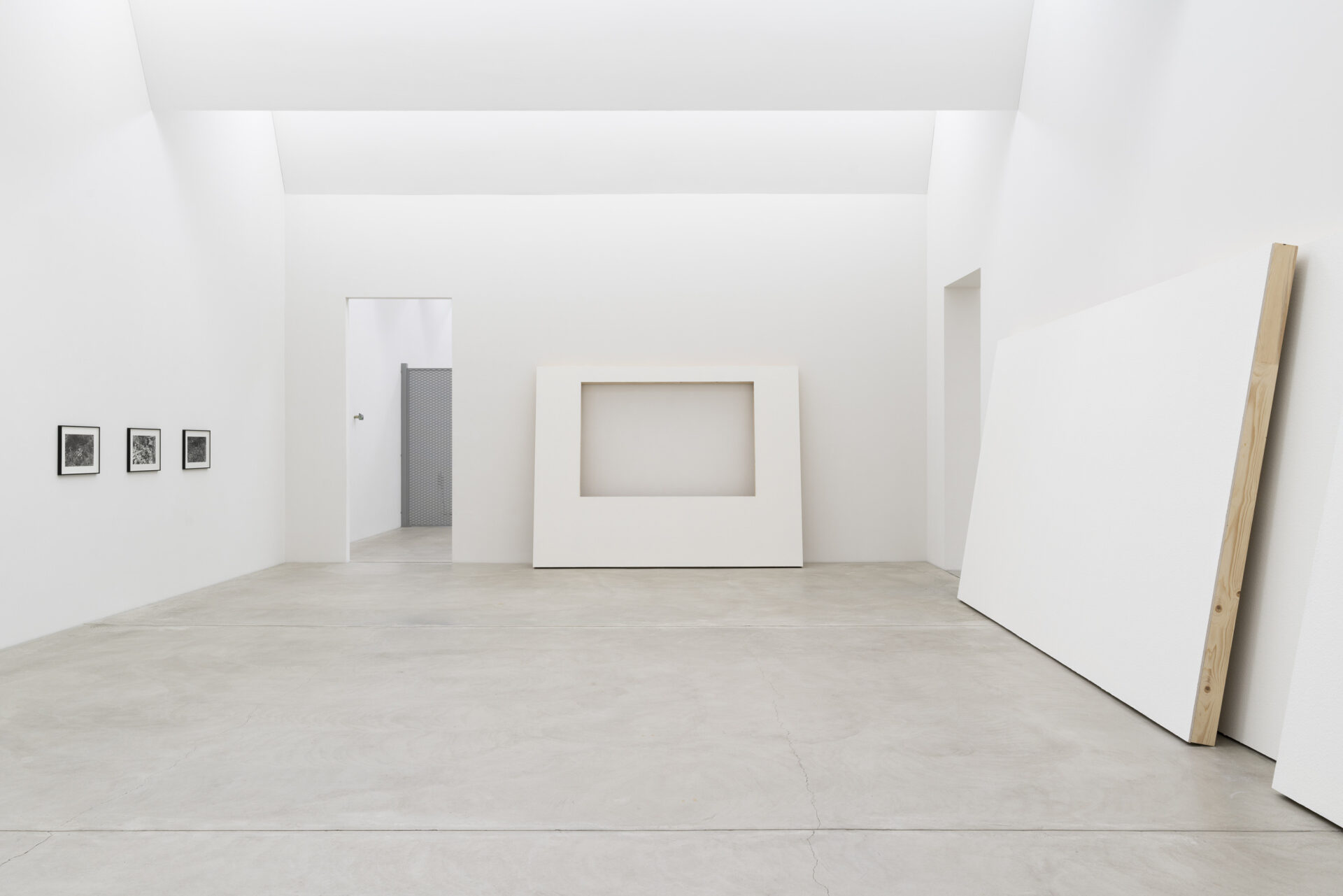
‘I have grappled with the absence of a personal “aesthetic” in my own practice’ – in conversation with Sung Tieu
Sung Tieu explores the impact of architecture and design on both the individual and on society. Her artistic research is particularly focused on investigating the structures and strategies employed by police, military and government institutions to control, condition and manipulate people. What sets her practice apart is the seamless integration of these processes with her family history, shaped by her Vietnamese heritage and her migration to the Federal Republic of Germany in 1992. Artist Remco Torenbosch asks Sung Tieu about her exhibition One Thousand Times, which opened a week ago at Kunsthalle Nürnberg.
One Thousand Times comprises a travelling exhibition (from Kunst Museum Winterthur to Kunsthalle Nürnberg) and a comprehensive catalog encompassing both older and newly created works. Could you talk me through the selection process of the works?
‘I was having a conversation with my graphic designer and dear friend, Dan Solbach, and we shared a laugh about how traditional monographs have become a bit obsolete. It seems people have have lost interest in them and have stopped buying them. So when we were faced with the task of making a new book, we thought: why not make something that is genuinely useful – a piece that could serve as a practical source material for research. The catalogue’s selection process was then guided by a specific focus on works related to the production of objects linked to the labor of Vietnamese contract workers across the various factories (VEBs) in the German Democratic Republic (GDR). The resulting compilation not only presents a comprehensive collection of my works on the subject but also delves into a broader exploration, weaving together research and artistic output spanning ten years of work.
The exhibition, in that sense, naturally extends from this collaborative introspection. One Thousand Times, as an exhibition, stands as a testament to the symbiotic relationship between artistic exploration and the socio-political contexts in which it unfolds, including within the respective art institutions themselves.’
Could you tell me more about the title of the book and its cover image?
‘The idea for the cover also came from Dan, who has been following my artistic endeavors since day one. His decision to feature a photograph from my family album – a candid group picture taken during the celebration of my seventh birthday in the modest confines of my family’s Gehrenstrasse apartment – serves as a deliberate contrast to the content of the book. It acts a visual prologue that, through its intimacy, creates an illusion of familiarity. But the book itself diverges from this promise. Instead, inside it adopts a bureaucratic aesthetic, presenting each work with an unadorned matter-of-factness that conceals the personal nuances one might expect. This deliberate absence invites the audience to engage solely with the artwork and research, divorced from my subjective lens, that is only indirectly present. The accompanying texts further contextualise the works within an academic and historical framework. One Thousand Times, as a title, becomes a subtle nod to the multiplicity of lives it aspires to explore rather than focusing on a singular individual experience.’
‘The experience of limited space was a lived reality for me when growing up. We occupied a room measuring 4.71 meters by 3.41 meters in length and width’

In the exhibition you show a new work titled Room 208, where you’ve recreated the interior of the room you shared with family at Gehrenseestrasse in Berlin’s Alt-Hohenschönhausen on a 1:1 scale. This recreation is crafted from laminated wood and abstracted. Could you tell me more about this specific work?
‘The experience of limited space was a lived reality for me when growing up. We occupied a room measuring 4.71 meters by 3.41 meters in length and width within one of the Plattenbauten at Gehrenseestrasse 1. This was a truly confining space, especially given that it was shared by three individuals. What’s funny to note is that it had entirely escaped my recollection that my mother and I were living there with another person, a friend of hers from whom we were subletting. I truly can’t remember that there were three of us. It was only during one of the tours I organised last summer that my mother made me aware of it. This revelation prompted me to encapsulate that space, with all its dimensions, volumes, and constraints. Rather than focusing on personal belongings, I chose to abstract the furniture –chairs, wardrobes, tables, a fridge and other kitchen utilities. The artwork becomes an exploration of spatial awareness, a conscious effort to convey the challenges and constraints associated with fitting life’s necessities within specific spacial parameters. Essentially, it serves as a conduit for dialogue with both the tangible and intangible elements of such an environment. What’s intriguing is that, when viewing the work, you cannot easily discern the number of people living there – whether it was 2, 3 or 4.’
A highly distinctive and characteristic aspect of your (earlier) work lies in the use of different types of metal. Could you elaborate on your unique way of employing metal in your work, perhaps from a personal perspective?
‘My use of various metals carries a strangely personal significance. It was only a few years ago that I realized my father had worked in a steel mill in the GDR, which, I suppose, must have unconsciously influenced me. I find myself inherently drawn to cold materials like steel, as well as to austere spaces and colourless rooms. This inclination might be linked, in part, to the transient nature of my early life experiences. Constant relocations around Germany during my childhood meant that I didn’t accumulate many personal belongings. We often lived alongside other people’s furniture or belongings or acquired necessities out of practicality rather than for their aesthetic appeal or quality. I also have never felt a strong sense of attachment to personal belongings. As a result, I have grappled with the absence of a personal “aesthetic” in my own practice, struggling to find a visual language for something that isn’t necessary focused on the visual itself, despite dealing with space, design, and imagery in the real world.’
‘Drawing from Arendt’s profound insights, the work 'Zugzwang' navigates the nuanced terrain where language serves as both a tool both of empowerment and, paradoxically, of entrapment and dehumanization simultaneously’
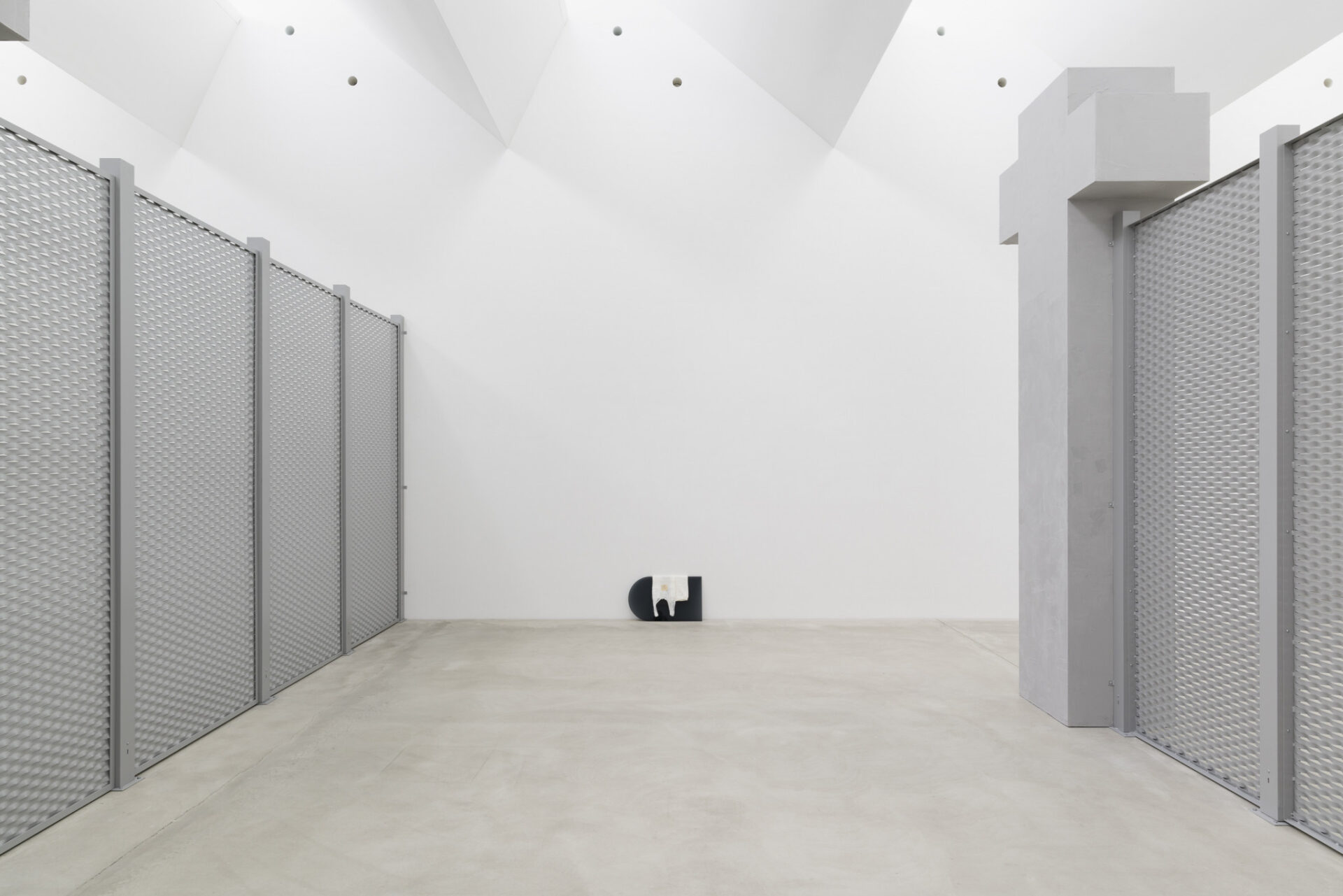
Beyond what is presented, what holds equal, and perhaps even greater, importance is what the visitor won’t be able to see. Throughout world history, the absence of the human scale or the reduction of individuals within bureaucratic systems had often led to violent acts. How do you address the dehumanising aspect of bureaucracy in your practice and research? Does this come into play, perhaps in works like Zugzwang (2020)?
‘When I think about your question, I am reminded of the profound influence Hannah Arendt has had on me. In the realm of bureaucracy, language emerges as a powerful battleground. The ongoing fight over words and their meanings becomes strikingly apparent at this moment in history, be it in the news, at the International Court of Justice, or within the bureaucratic circles. Drawing from Arendt’s profound insights, Zugzwang navigates the nuanced terrain where language serves as both a tool of empowerment and, paradoxically, of entrapment and dehumanization simultaneously. Ultimately, Arendt’s reflections on the banality of evil and the erosion of individual agency within bureaucratic structures resonate throughout the work, guiding an exploration of the psychological dimensions that lurk beneath the surface of such institutional mechanisms.’
Architecture plays an important role within your work, be it through Block G (Gehrenseestrasse, Berlin) (2023), the interior walls of Multiboy (2020), the 3D–animated Hotel Nacional de Cuba (2022), or the floor planmodels of Civic Floor (2023). Could you tell more about the significance of architecture within your practice?
‘I view architecture as an alternate mode of communication, expressing certain ideas, values, priorities, restrictions, and freedoms. Architecture emerges through these ideas as a concentrated reservoir of information. Similar to other forms of artistic production, architecture conveys the wealth of information it encapsulates. In Block G (Gehrenseestrasse, Berlin), the examination of architecture delves into the lived experience of a specific space, intertwining personal history with collective consciousness and the tangible aspects of the constructed environment. The dome sculpture in Multiboy introduces an architectural element that functions as a symbolic focal point, enriched with layers of cultural meaning and metaphor. The 3D–animated representation of Hotel Nacional de Cuba extends this exploration into virtual architectures, navigating the juncture between reality and its digital simulations. The floorplan models in Civic Floor shift the focus to a more abstract form of engagement with architecture. Here, the emphasis lies on the mechanisms of control within built architecture — manifesting not only in physical forms but in the intricate networks of these spaces designed for surveillance. Bureaucracy, within my broadened interpretation of architecture, transforms into a constructed environment that manifests not only in tangible forms such as paper documents or computerized systems but also extends into a complex landscape spanning juristic, economic and socio-political dimensions. Bureaucracy, here, surpasses its administrative functions.’
‘Each tour became an unforgettable memory for me, all unfolding in the midst of impending demolition, casting poignant shadows over the site's imminent transformation’
Last summer you invited friends, colleagues and the general public to accompany you on tours through your former neighborhood where you grew up in and where the housing complex Gehrenseestrasse, now a ruin, will soon be demolished. Unfortunately, I wasn’t able to join you, so I was wondering if you could tell me some more about these tours?
‘The inception of the tours unfolded in a rather intuitive and organic manner, sparked by a modest Instagram post and a Google document. The idea was born out of a desire to connect with like-minded individuals, providing them with an intimate insight into a location that held profound personal and artistic significance for me. My research on the building traces back to my days at art school, and last year, the realization of its potential as a historical treasure surfaced when I spontaneously brought a friend for a visit. Situated on the outskirts of Berlin, this Plattenbau enclave witnessed pivotal historical moments. Initially repurposed around 1980 as the largest housing complex for predominantly Vietnamese contract workers in the GDR, it comprised approximately 1000 apartments accommodating over 4000 workers. Its history unfolds through significant events such as the fall of the Berlin Wall in 1989, the subsequent years of uncertainty for former contract workers, and the violent racial outbreaks of the early ’90s. Beyond its historical importance, the site held personal resonance, of course, being the very place of my upbringing and therefore making it a profoundly resonant location for both personal and communal narratives.
The immense size of the housing complex, spanning approximately 68,000 square meters, contributed to the site’s allure. Abandoned since 2002, it remains Berlin’s largest ruin, symbolizing the shifting ideologies, the neglect of such histories within the city, and the dissolution of a bygone state (the GDR). Additionally, it resonates with the vibrant Vietnamese community that once flourished within its walls, a community still present in the surrounding neighborhood today.
The response to the tours was immensely heartening, bringing together a much larger audience than I could have ever dreamt of. Notable participants included some of my old friends and other community members who had also lived there, generously sharing their memories and adding an extra layer of depth to the tours. Each tour became an unforgettable memory for me, all unfolding in the midst of an impending demolition, casting poignant shadows over the site’s imminent transformation.’
Kunsthalle Nürnberg
March 9 – June 9, 2024
One Thousand Times
ISBN-10: 3864424267
Remco Torenbosch
is kunstenaar















